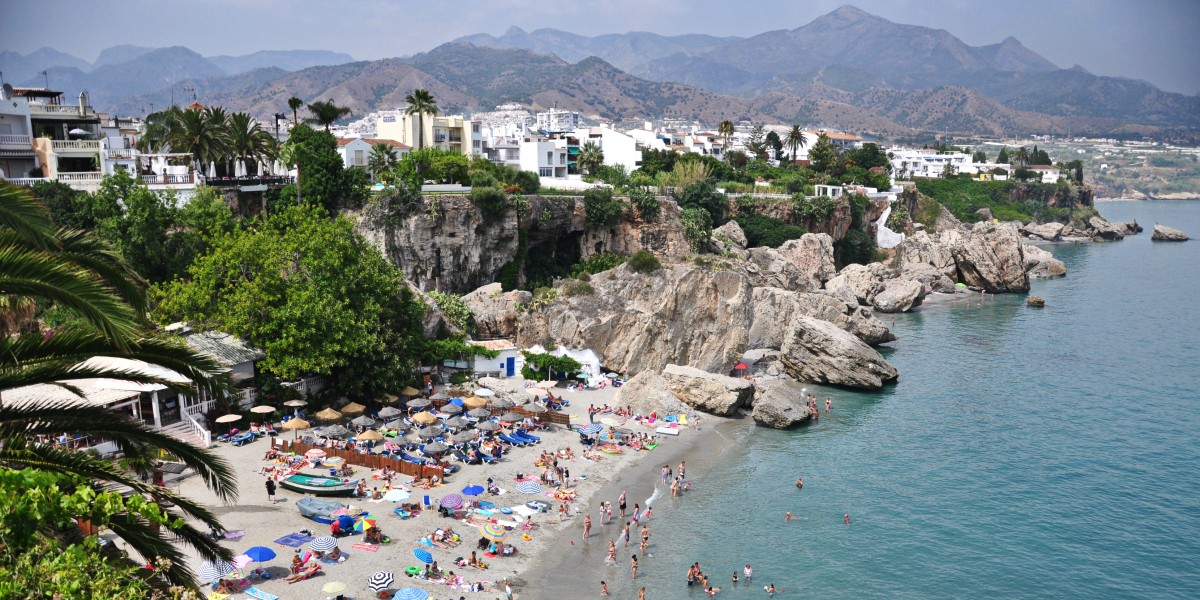
Andalucia's coastline is a remarkable meeting of two seas, encompassing the wild, windswept shores of the Atlantic's Costa de la Luz and the sunny coves of the Mediterranean. With so much choice available, the prestigious Bandera Azul, or Blue Flag, is a trusted signpost for quality, pointing to the region's cleanest, safest, and best-managed beaches. This internationally recognised award highlights spots that go above and beyond, and understanding what it truly represents is key to appreciating them.
What does a Blue Flag award mean?
The Blue Flag award is more than just a marker on the sand; it's an assurance of quality. To earn one, a beach must meet stringent international standards covering everything from water cleanliness and safety to environmental management and accessibility. Spain flies more Blue Flags than anywhere else in the world, so you won't run out of stretches of Spanish coastline to enjoy.
Almeria’s top Blue Flag beaches for 2025
Almeria’s coast is a place of dramatic contrasts, where the arid, desert-like landscapes of the Cabo de Gata-Níjar Natural Park crash into the Mediterranean. Some of Spain's best, most epic beaches can be found here.
San José, Níjar
The main beach of San José is a lovely crescent of fine, golden sand that serves as the heart of this little white-washed village. Located in the Cabo de Gata park, it's a great place for kayaking or snorkelling, with local outdoor companies offering equipment hire.
Local tip: parking in the village centre during July and August can be very difficult. Arrive early in the morning, or better yet, park on the outskirts and enjoy the ten-minute walk down to the shore. Or, get to the beach for sunset and take in the view as you sip on a beer.
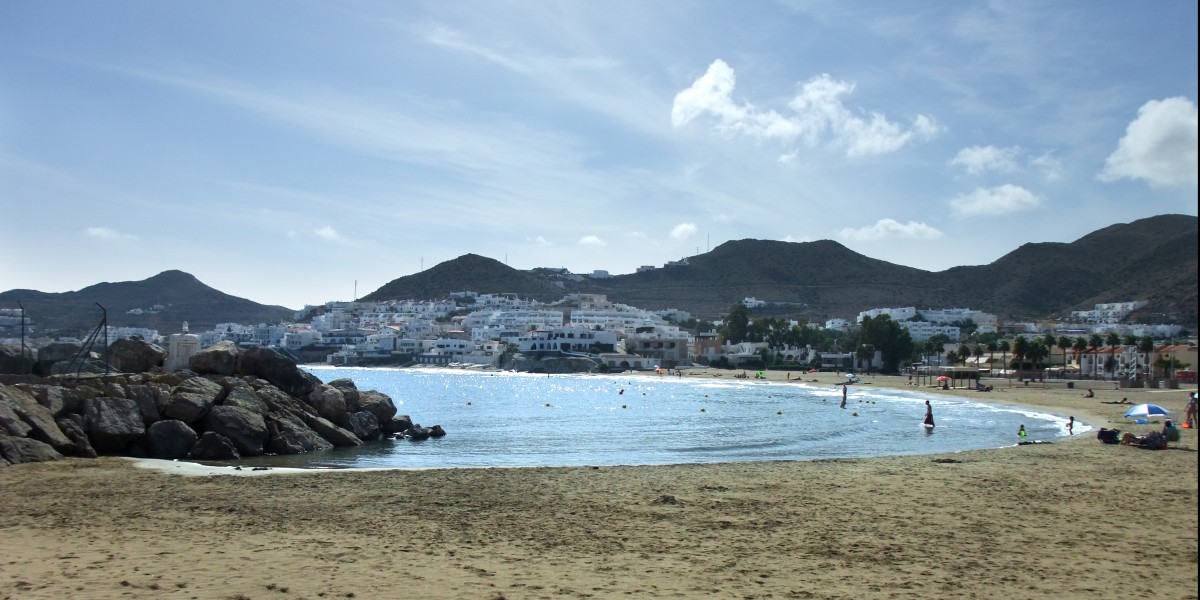
El Playazo, Vera
As the name suggests, El Playazo is a huge expanse of beach, stretching for kilometres along the coast. Its sheer size means there is always a quiet spot to be found, even in the height of summer. The beach has different zones, including a well-known naturist area, and is backed by several good chiringuitos for lunch or a cold drink.
Local tip: the beach is so long that it’s worth walking a bit to find your perfect spot. The northern end is typically quieter and more popular with naturists, while the southern end has more facilities and is closer to the town.
Granada's Costa Tropical: Blue Flag galore
Named for its unique subtropical microclimate, Granada's coast is a world away from the long, sandy strips of its neighbours. Here, the Sierra Nevada mountains tumble down to the sea, creating a rugged coastline of sheltered coves, pebbly shores, and incredibly clear water.
Playa de la Herradura, Almuñécar
This beautiful horseshoe-shaped bay is protected on both sides by large, rocky headlands, which keep its waters calm and clear. This makes La Herradura one of Spain's top destinations for scuba diving and snorkelling. The beach itself is a mix of dark sand and pebbles, backed by a lovely promenade with plenty of cafes and dive shops.
Local tip: the beach is more pebble than sand, so a pair of swimming shoes or jellies will make your walk to the water much more comfortable. Many of the dive centres offer affordable "try dives" (bautismos de buceo) for beginners if that takes your fancy.
Playa de Calahonda, Motril
Not to be confused with its namesake on the Costa del Sol, Motril's Calahonda is famous for one thing: the exceptional clarity of its water. This large beach of dark sand has been consistently awarded the Blue Flag for its cleanliness and great facilities. The sea gets deep very quickly, so it's great for confident swimmers who want to do a bit of front crawl.
Local tip: because the water gets deep so quickly, it may not be the best choice for families with very young children, but it is fantastic for snorkelling on calm days. Head to the eastern end for the clearest water.
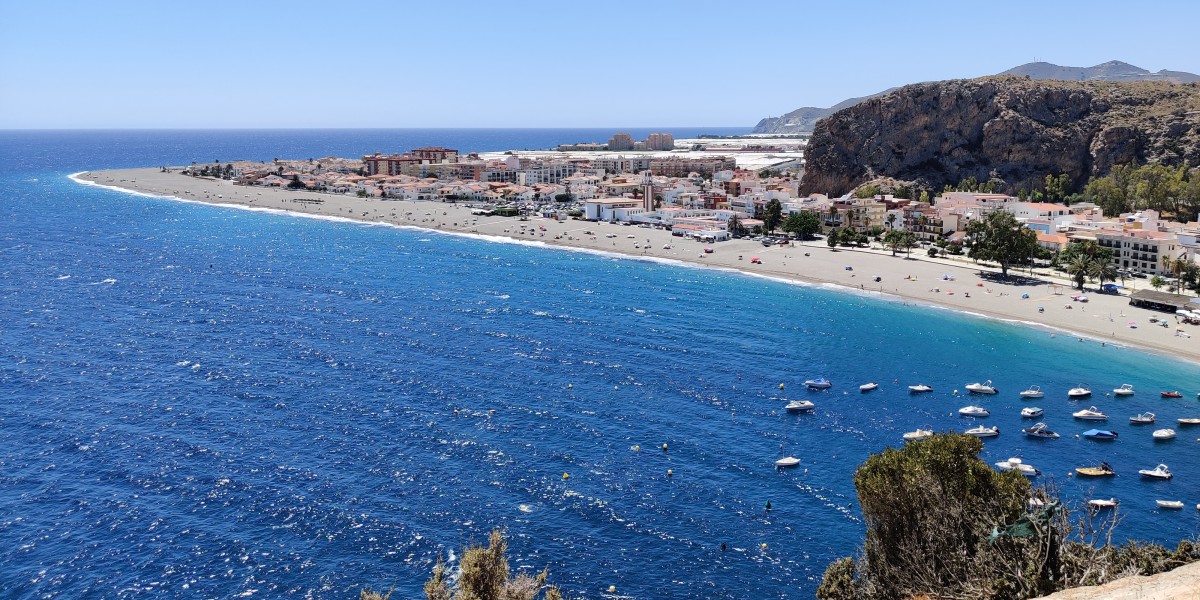
Malaga's Costa del Sol: new and classic Blue Flag beaches
The Costa del Sol is perhaps Spain’s most famous coastline, and it’s packed with Blue Flag beaches to match its reputation. The choice here is vast, from glamorous beach clubs in Marbella to quieter, family-friendly coves and idyllic seaside towns.
Los Monteros (Adelfas), Marbella
Newly awarded a Blue Flag for 2025, Los Monteros is a fantastic example of Marbella's quieter, more exclusive side. Located east of the city centre, it features beautiful fine sand backed by a protected area of natural dunes. It’s a tranquil spot that feels a world away from the bustle of central Marbella.
Local tip: this beach is right next to the famous La Cabane beach club. You can enjoy the same beautiful stretch of sand for free, and the wooden boardwalks through the dunes are perfect for a scenic walk.
El Chaparral, Mijas
Set in a small cove, El Chaparral has distinctive rocky outcrops that break up the sand. This geography makes it one of the better beaches in the Mijas area for snorkelling when the sea is calm. It has a more rugged, natural feel than its neighbours, offering a welcome change of pace.
Local tip: aim for the area near the chiringuito "Sheriff" as a landmark and have a cheeky sangria while you're there. Parking is limited, so arriving before 11 am in summer is a wise move.
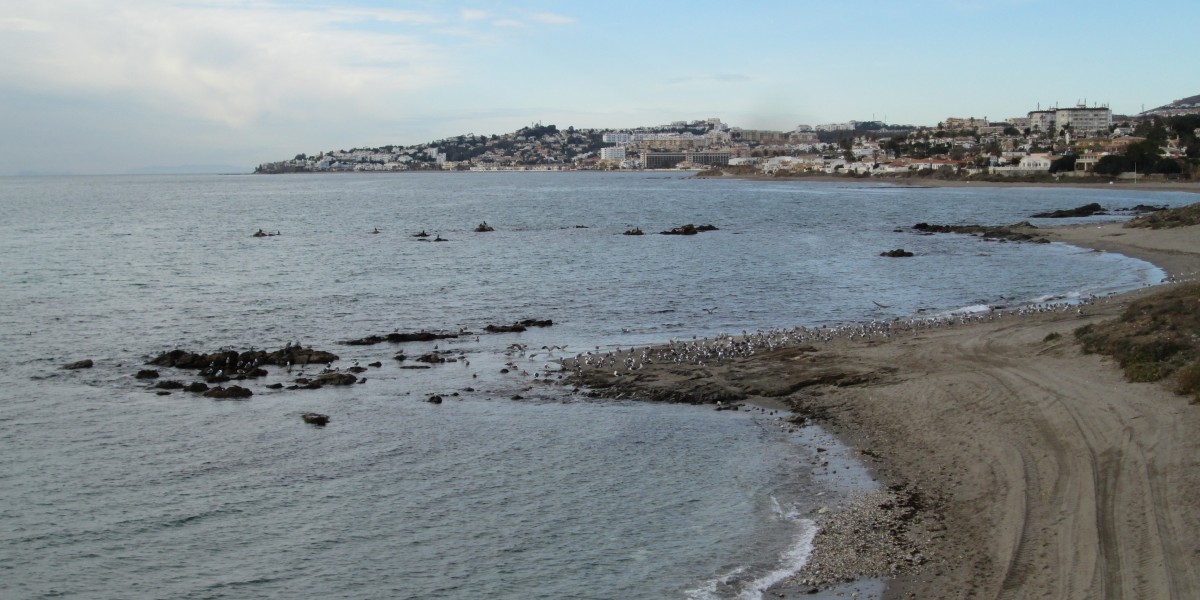
Best Blue Flag beaches in Cádiz for 2025
The Costa de la Luz in Cádiz is defined by the Atlantic. Its beaches are vast, wild, and beautiful, with endless stretches of fine, golden sand and a breeze that makes it a global hotspot for wind and kite surfers.
La Barrosa, Chiclana de la Frontera
Often ranked among Spain’s very best beaches, La Barrosa is a breathtaking, 8km-long expanse of fine sand. The beach has two distinct characters: the northern end is a bustling resort strip with a promenade, while the southern end remains completely wild and natural, backed by dunes and pine cliffs.
Local tip: the best experience is to walk the full length of the beach at low tide. Start at the resort end and head south towards the old watchtower, Torre del Puerco, to see the coastline transform from lively to completely unspoilt.
- Property for sale in Chiclana de la Frontera
- Long-term rentals in Chiclana de la Frontera
- Holiday rentals in Chiclana de la Frontera
Zahara de los Atunes, Barbate
Zahara has a cool, bohemian vibe that sets it apart. The beach itself is a magnificent stretch of golden sand and clear water, famous for its spectacular sunsets. While the village is right there, the beach feels wonderfully open and unspoilt, and it's home to some of Andalucia's trendiest chiringuitos.
Local tip: always check the forecast for the Levante wind before you go; it can be very strong here. The town is famous for its bluefin tuna (atún rojo de almadraba), so trying a tuna dish at one of the local restaurants is a must.
- Property for sale in Zahara de los Atunes
- Long-term rentals in Zahara de los Atunes
- Holiday rentals in Zahara de los Atunes
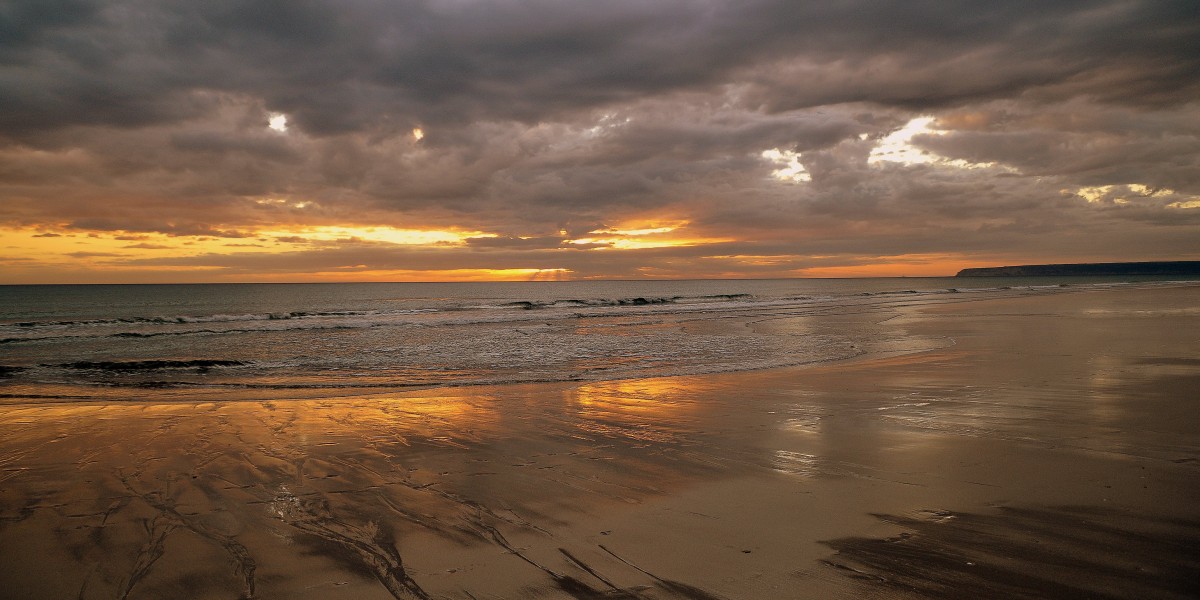
Huelva's Costa de la Luz: Blue Flags flying
Bordering Portugal and the Doñana National Park, Huelva’s coastline is characterised by wide, golden beaches backed by extensive pine forests and sand dunes. It’s a region that feels spacious and deeply connected to nature.
Isla Cristina/Lepe, Islantilla
Islantilla is a well-planned, modern resort that consistently earns a Blue Flag for its beach's high-quality services and cleanliness. It offers a wide range of facilities, from sailing schools to a beachfront golf course, all arranged along a lovely, landscaped promenade that’s perfect for a stroll or bike ride.
Local tip: the beach has a small tourist train that runs the length of the resort, which is a fun and easy way to get your bearings or to get back to your car after a long walk down the shore.
Isla Canela, Ayamonte
Located on a peninsula right on the Portuguese border, Isla Canela is a huge tongue of fine, golden sand. With the Atlantic on one side and the mouth of the Guadiana River on the other, its waters are particularly calm and shallow, making it a favourite Spanish beach with families.
Local tip: from the nearby town of Ayamonte, you can take a short, cheap ferry ride across the river to Vila Real de Santo António in Portugal. It’s a great way to have lunch in another country and be back on a Spanish beach in the afternoon.
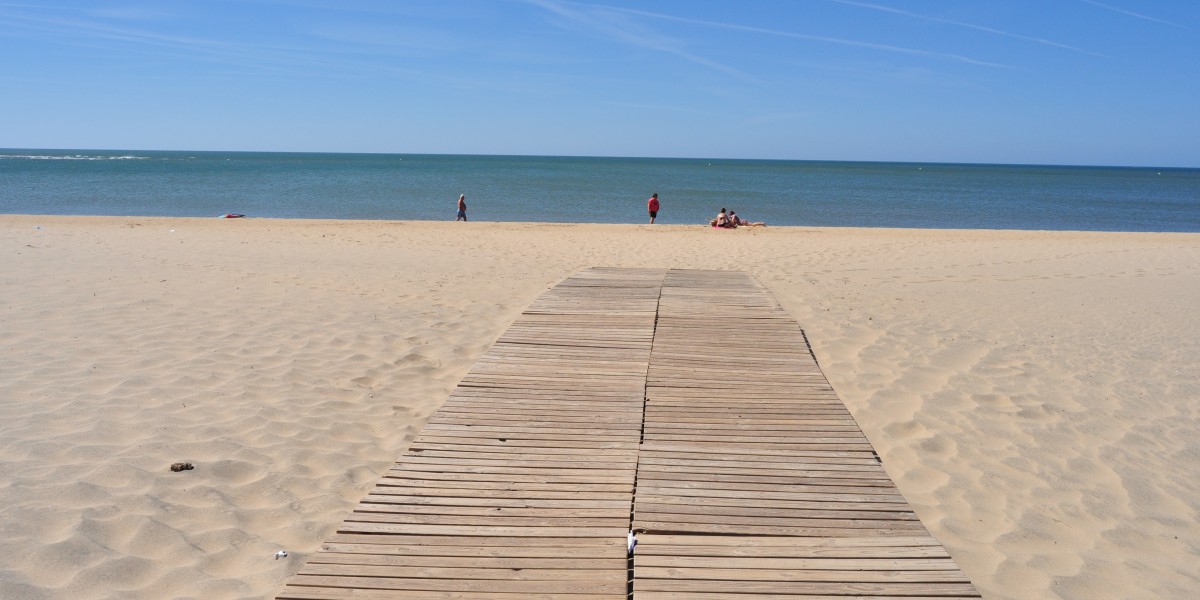
Andalucia’s inland Blue Flag beaches
Proving that you don’t need a sea for a brilliant beach, Andalucia now boasts several award-winning inland bathing spots. These freshwater beaches, set in beautiful nature reserves, offer a unique and wonderfully refreshing alternative on a hot summer’s day.
La Breña, Almodóvar del Río
Andalucia’s first inland Blue Flag beach is set on the shores of the vast La Breña reservoir in Córdoba. It has a dedicated sandy area, calm water for swimming and kayaking, and a restaurant and picnic spots set amongst the trees. It’s a fantastic and well-equipped spot for a family day out.
Local tip: combine your swim with a visit to the magnificent Almodóvar Castle overlooking the reservoir. It was a filming location for Game of Thrones and is one of the best-preserved castles in Spain.
- Property for sale in Almodóvar del Río
- Long-term rentals in Almodóvar del Río
- Holiday rentals in Almodóvar del Río
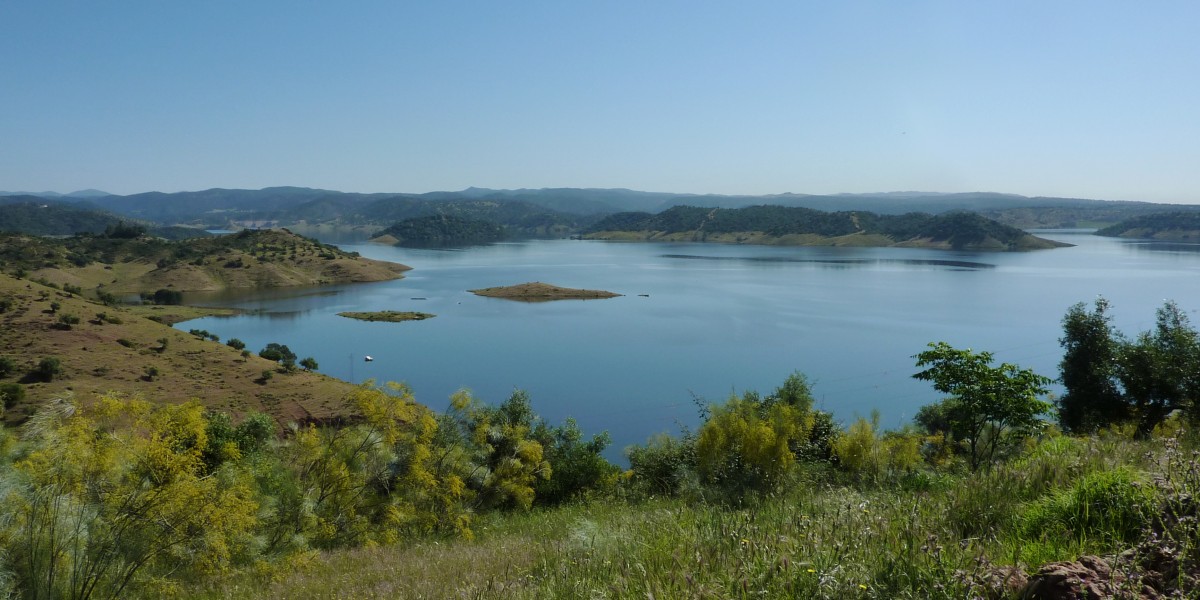
El Encinarejo, Andújar
Deep within the Sierra de Andújar Natural Park in Jaén, El Encinarejo is a beautiful recreational area on the banks of the Jándula river. This natural swimming spot offers a cool dip in a stunning, wild setting, surrounded by forest.
Local tip: this area is one of the last habitats of the endangered Iberian Lynx. While a sighting is extremely rare, a visit here is best combined with a drive through the natural park and a stop at the sanctuary of the Virgen de la Cabeza for incredible views.
